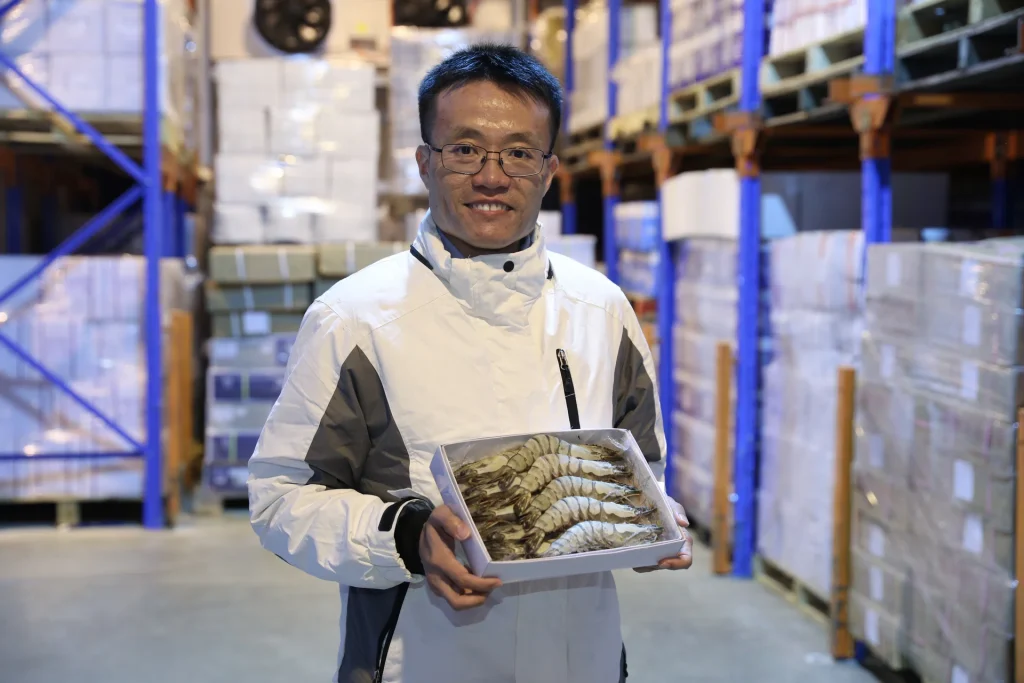[SINGAPORE] From a single chest freezer in 1986, Hong Seafood has grown into a global seafood distribution business.
The company now supplies to over 300 customers in Singapore and exports to over 10 countries, building its own brands in the process.
One major turning point was in 2009, when Loh Guo Pei – son of company founder Loh Par Hong – joined the business.
Previously, Hong Seafood bought seafood from importers and processed these in Singapore. In 2010, the younger Loh changed the company’s business model.
Instead of relying on importers, Hong Seafood started sourcing directly from suppliers overseas. Said Loh: “It gives us greater control over product quality and a more resilient supply chain.”
Building on that shift, the company relocated some of its processing operations – scaling, gutting and portioning – to be closer to the raw materials. It set up processing facilities in Vietnam and Indonesia, where it was sourcing some of its seafood.
A NEWSLETTER FOR YOU

Friday, 8.30 am
SGSME
Get updates on Singapore’s SME community, along with profiles, news and tips.
This vertical integration also supported the company’s international push. In 2009, Hong Seafood had begun selling seafood in Taiwan too, seeing it as a regional market with a strong aquaculture industry and high seafood consumption.
In 2015, the company then opened an office in Vietnam, which Loh described as a “promising market”. “We source a significant volume of seafood from there, so we want to have a presence on the ground,” he said.
More recently, it entered Japan in 2023 and Mexico in 2024.
“Singapore’s market is about six million people, which is small,” Loh said. “But if we expand overseas, our potential market could grow to eight billion. That’s an opportunity we can’t ignore.”
In 2022, the company drew up a “30 by 30” plan that it has achieved this year: reaching S$30 million in revenue within three years, with 30 per cent coming from international markets.
It now has its sights set on a “50 by 50” target: S$50 million in revenue in the next five years, with 50 per cent coming from international markets.
Hong Seafood is currently eyeing entry into the United Arab Emirates (UAE), as seafood is generally considered halal. While it has yet to secure official halal certification, Loh noted that the region presents a growth opportunity.
Building brands for the B2B market
Another shift in strategy for Hong Seafood was going from white-label exports to establishing its own proprietary brands.
In 2024, the company registered two brands for business-to-business sales: Harbour Delights for farmed aquaculture products, and Ocean Finest for sea-caught products.
These brands allowed the business to distinguish itself in this space, said Loh. Its clients include five-star hotels and established restaurants.
“Going from blank and plain cartons to a more distinct packaging helped us to stand out against competitors. It’s about building recognition and being associated with quality.”

Riding the wellness wave
Besides expanding geographically, Hong Seafood has expanded its offerings based on its observations of trends.
Today’s consumers are more affluent and place a greater emphasis on wellness, said Loh. Yet some once-valued products are no longer as popular due to ethical concerns.
“Shark’s fin was once prized for its nutritional value,” he said. “But today’s consumers are more ethically conscious, and demand has dropped.”
With both wellness and ethics in mind, the company diversified its product line in 2015 with consumer-facing wellness brand Lau Yuen Tong, which sells bird’s nest and herbal chicken essence.
These products are primarily manufactured and sold in Taiwan, where they are sold in Lau Yuen Tong retail stores and stocked in major supermarkets. The Lau Yuen Tong brand now contributes about 10 per cent to Hong Seafood’s overall revenue.

But now, the company is looking at bringing production back to Singapore, so the brand can reach other markets.
“As we look to grow Lau Yuen Tong beyond Taiwan to places like China, Malaysia, Indonesia, and the UAE, we want to re-anchor production closer to home,” Loh said.
Similarly, the company is looking at processing higher-value seafood items such as sea cucumber and fish maw in Singapore, into ready-to-cook products.
Consumers today are more affluent and want premium products, but also value convenience, Loh said.
“Businesses appreciate ready-to-cook products that they can adapt to their own recipes. And for the younger generation, time-saving options are becoming increasingly worth paying for.”


